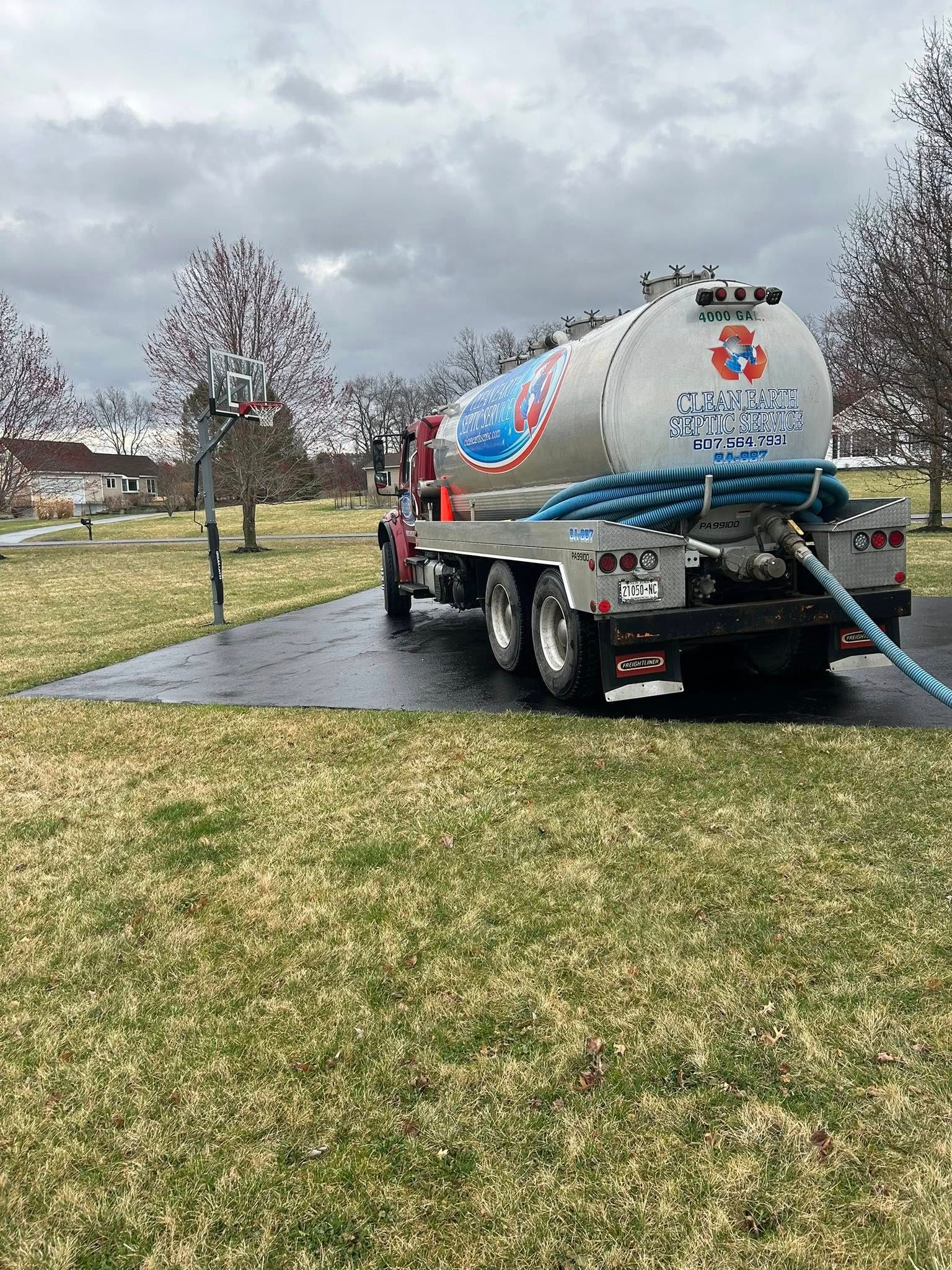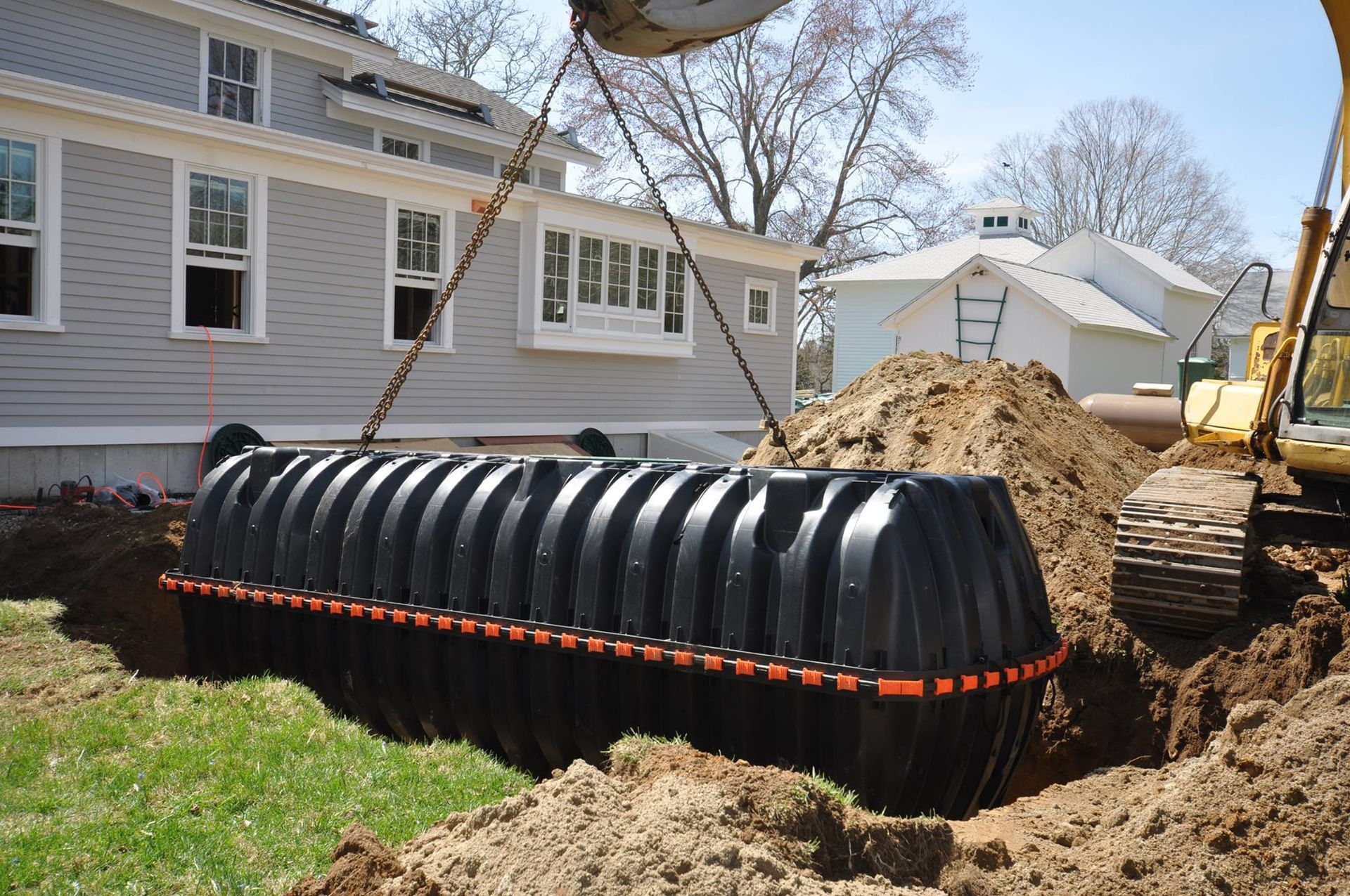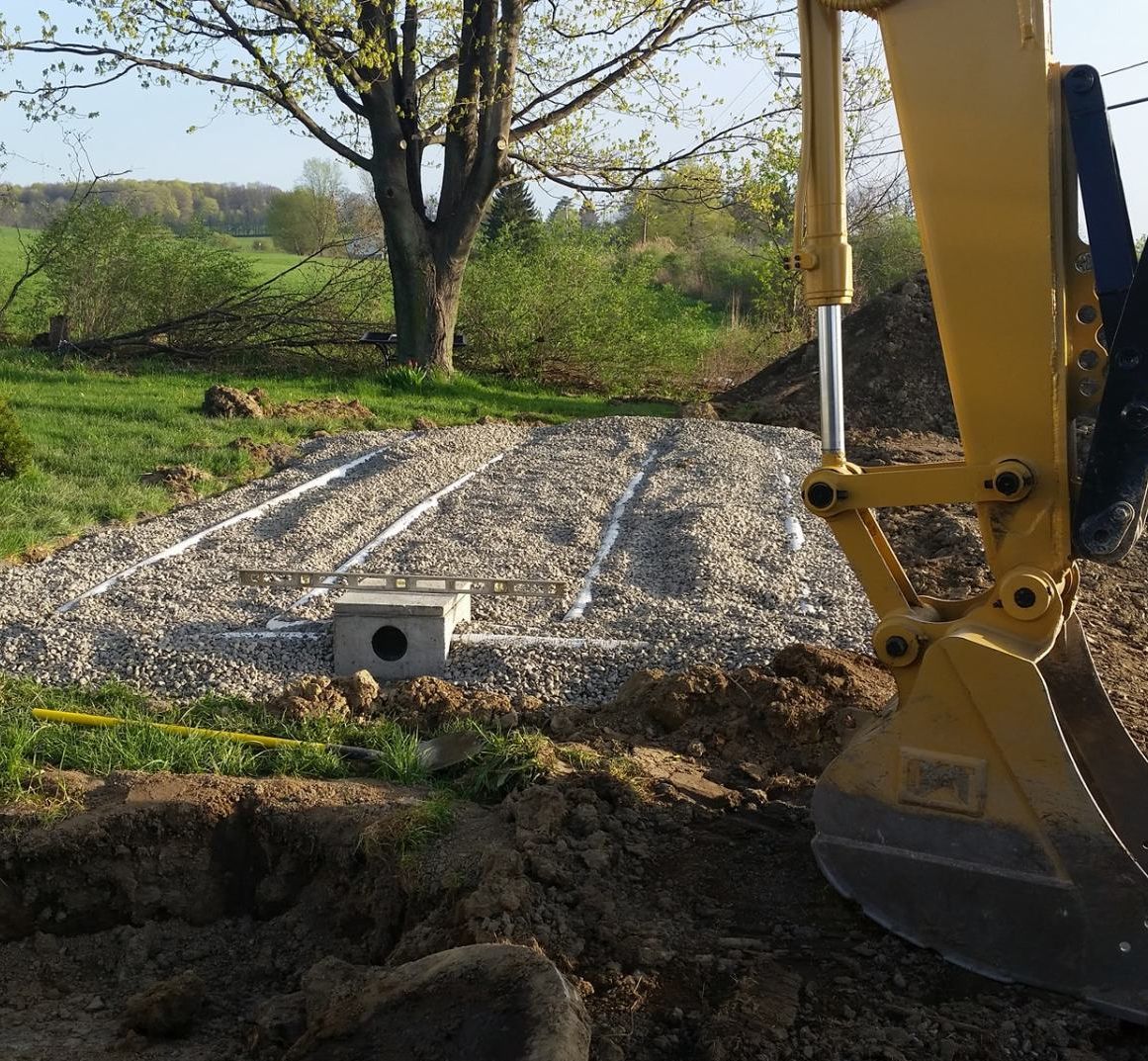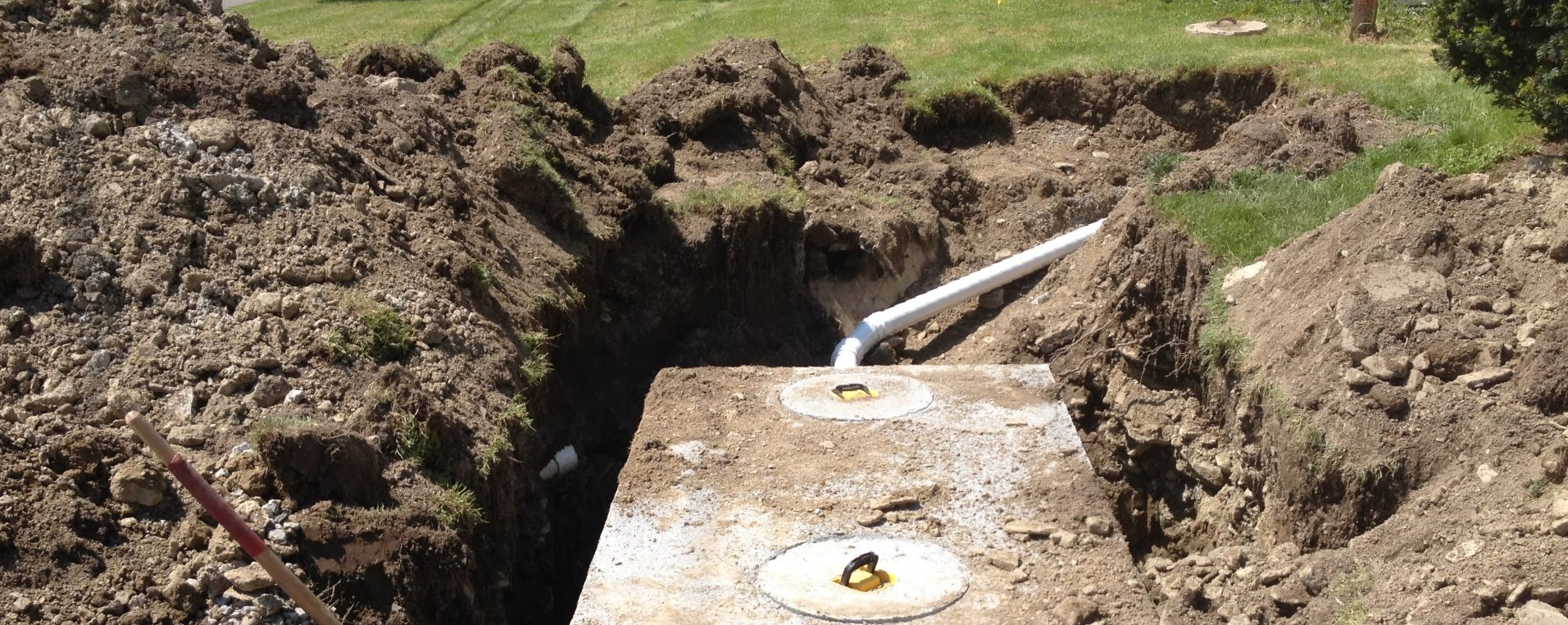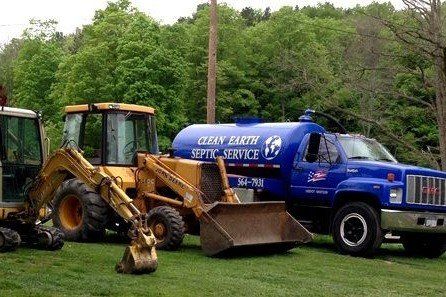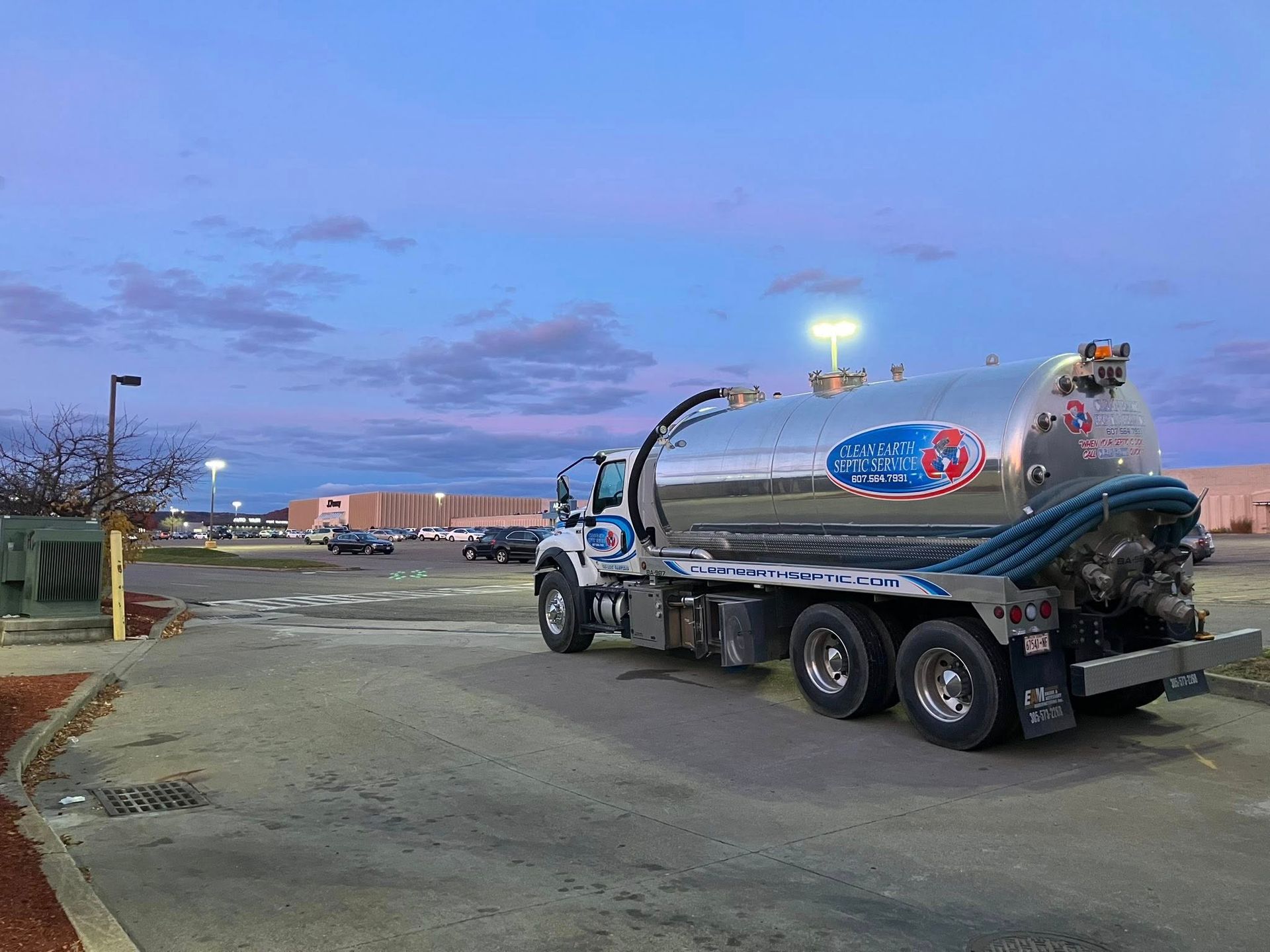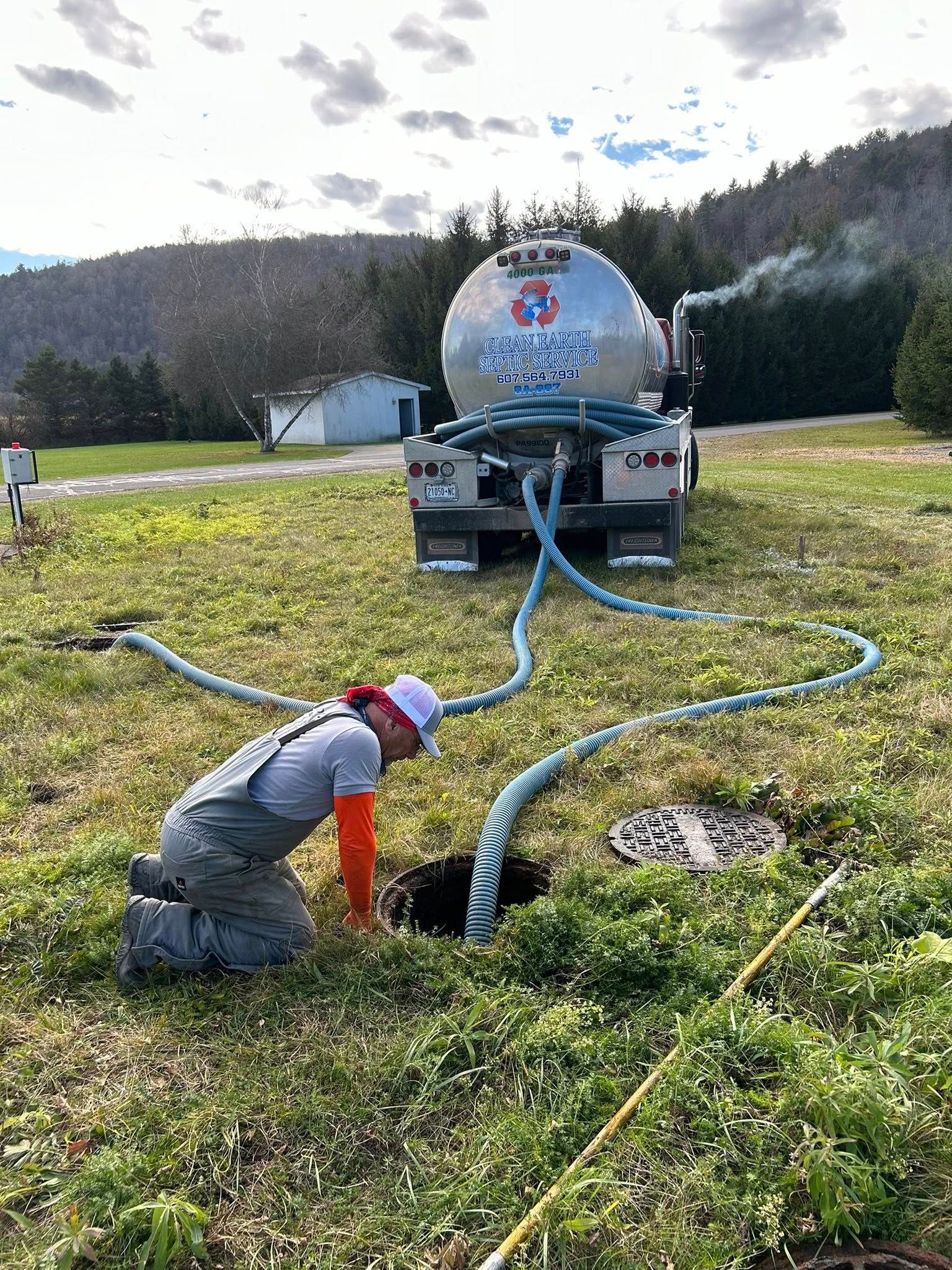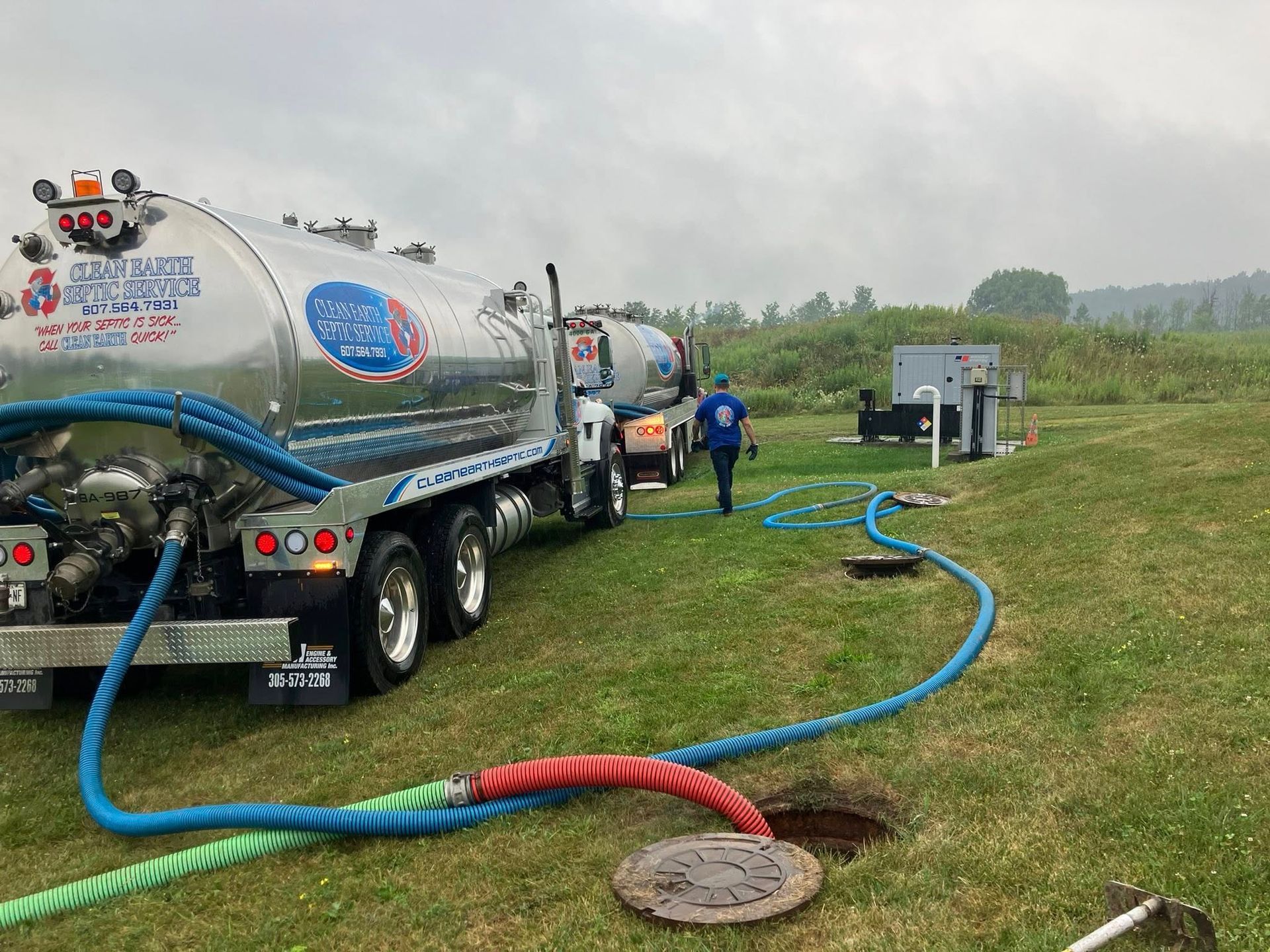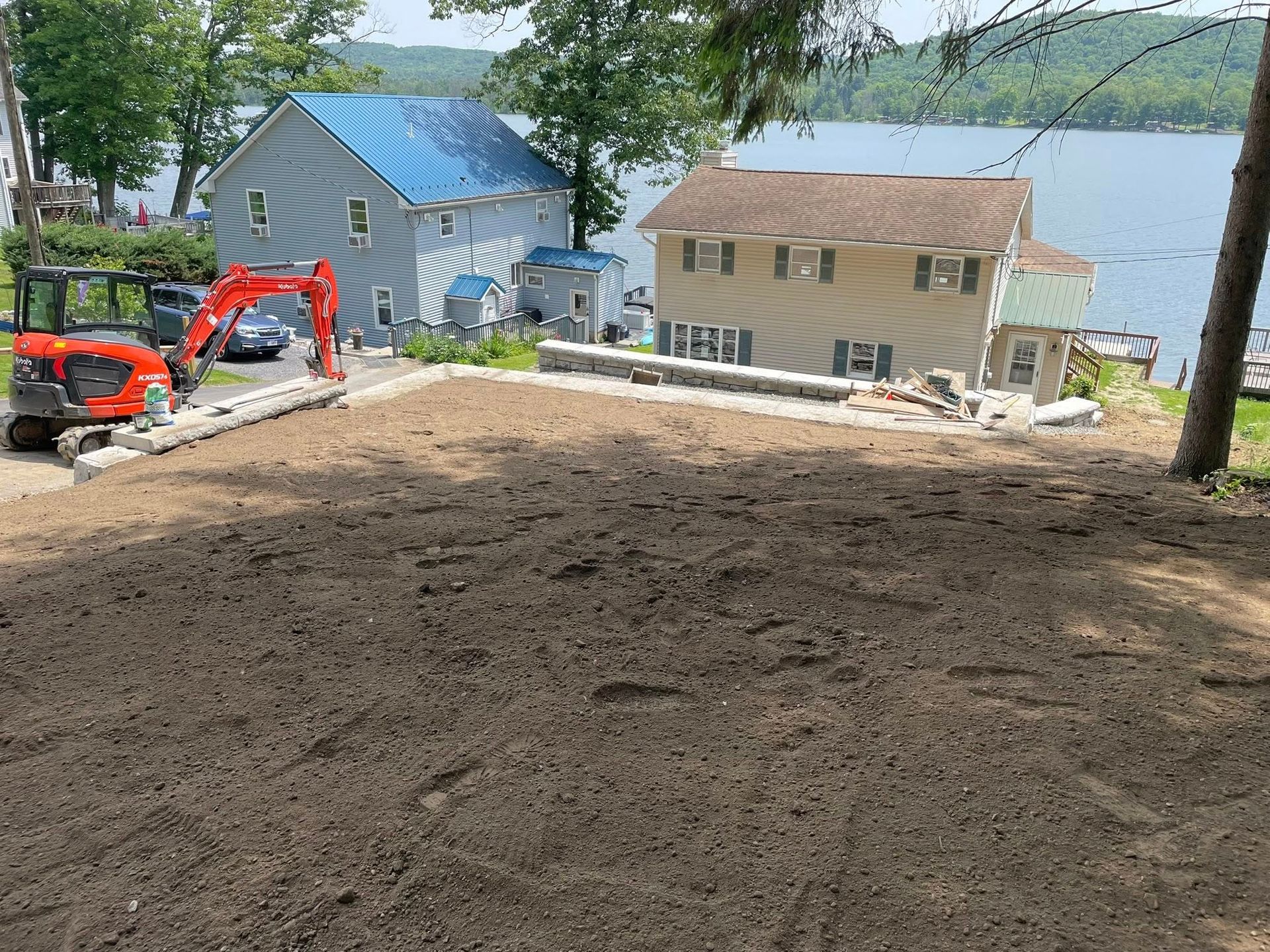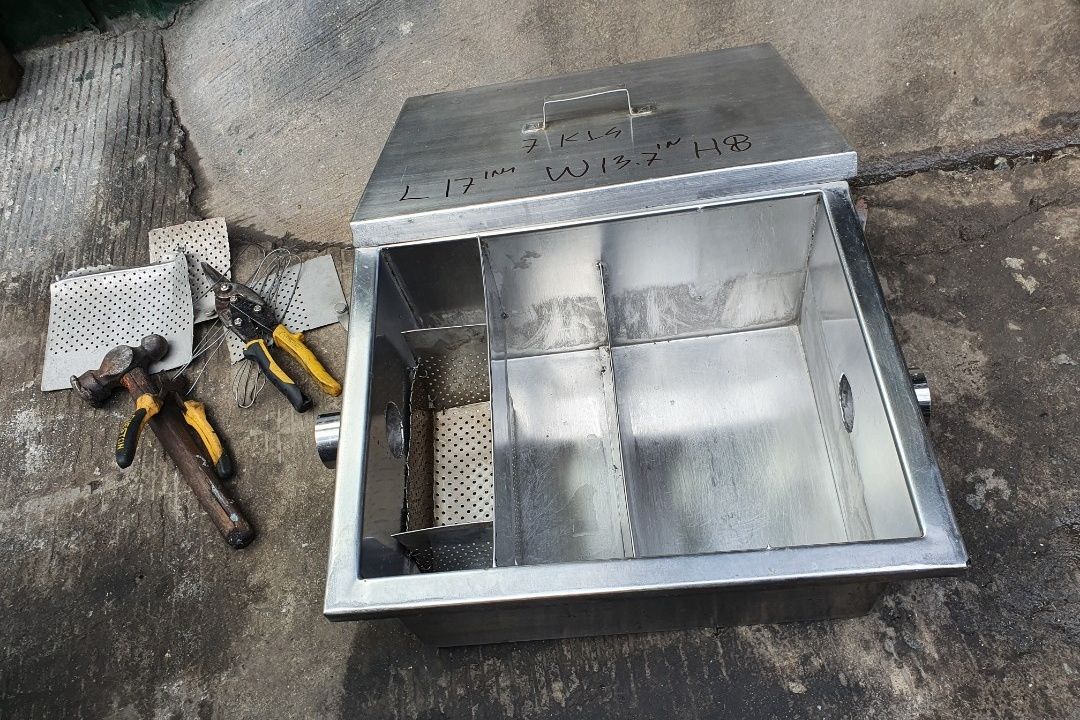Septic System 101: How Things Work
How Different Septic Systems Handle Wastewater
At Clean Earth, we've been servicing septic systems of all kinds for over a decade. We also offer full
excavation and installation of new septic systems and drain fields. We've noticed that many homeowners pay little attention to the type of septic system their home has, but knowing what happens to your wastewater and how to properly care for the system you have is important. We encourage you to
know where your system and its components are located, when it was installed and what type of tank you have. If you ever run into problems, this information will be essential for us to diagnose and repair things for you. Keep reading to learn more about the most common types of septic systems, or
contact us today to schedule your
septic service in the Twin Tiers region.
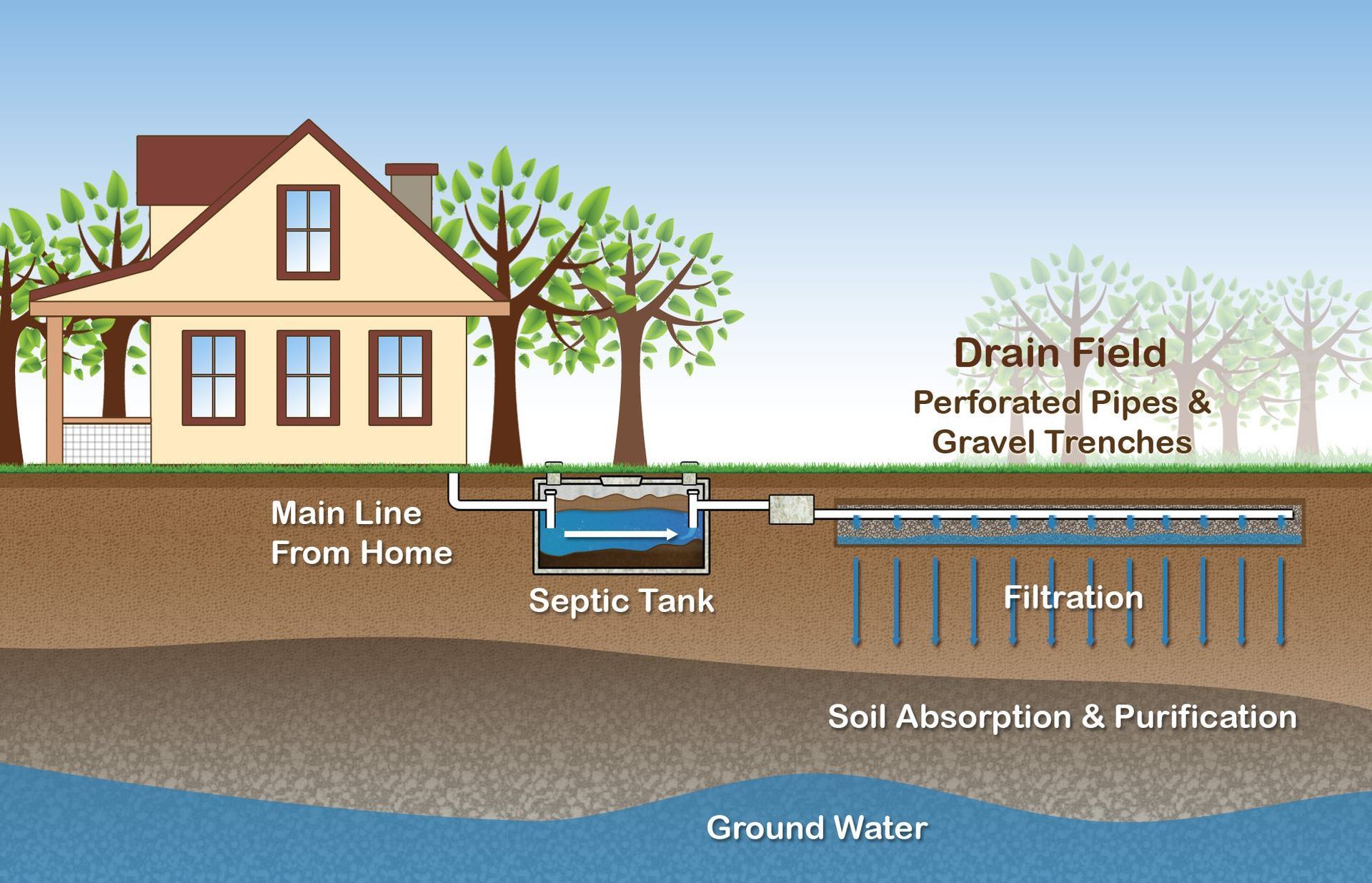
At Clean Earth, we've been servicing septic systems of all kinds for over a decade. We also offer full excavation and installation of new septic systems and drain fields. We've noticed that many homeowners pay little attention to the type of septic system their home has, but knowing what happens to your wastewater and how to properly care for the system you have is important. We encourage you to know where your system and its components are located, when it was installed and what type of tank you have. If you ever run into problems, this information will be essential for us to diagnose and repair things for you. Keep reading to learn more about the most common types of septic systems, or contact us today to schedule your septic service in the Twin Tiers region.
What does a septic system do?
A septic system is an underground wastewater treatment structure, commonly used in rural areas without centralized sewer systems. It consists of a septic tank and a soil absorption field, also known as a drain field. The septic tank, a watertight container, receives wastewater from household plumbing. Here, solids settle to the bottom to form sludge, while oils and grease float to the top as scum. The liquid wastewater, or effluent, exits the tank into the drain field, where it percolates through the soil. This process naturally removes harmful bacteria, viruses, and nutrients, ensuring the treated water safely re-enters the groundwater system. Proper maintenance of a septic system is crucial to prevent backups and environmental contamination. To learn more about septic pumping and how often you should have your tank serviced, click here.
What are the tanks made of?
- Concrete—Concrete septic tanks are durable and rust-proof but are hard to repair if damaged.
- Plastic—Plastic tanks are cost-effective but prone to damage.
- Fiberglass—Fiberglass septic tanks are stronger than their plastic counterpart but can be shifted or displaced if the water table rises too high.
What Are the Most Common Types of Septic Systems?
Conventional Septic Systems
A conventional septic system is the most common type of septic system in the Northeast. A conventional system starts with an underground watertight septic tank. Most tanks are made of concrete or polyethylene (a very thick, durable plastic material). Your home's wastewater flows from the house into the tank, where heavy solids settle to the bottom and fats, oils and grease float to the top. The remaining liquid waste, or effluent, is then pushed into a system of distribution pipes that branch out and slowly release wastewater into an absorption area called a drain field.
Drain fields are underground trenches or beds lined with gravel and strong geofabric. Along with natural bacteria, these layers filter out contaminants to protect the environment and ensure that waste is effectively filtered and distributed back to the ground. Because conventional systems are the most common type of septic system for single-family homes, they are relatively easy to repair when needed and we install many of these conventional systems each year. To learn more about septic system installation in Ithaca, NY,click here.
Elevated Sand Mound Systems
Mound septic systems get their name from a large, raised mound built to contain the drain field. The liquid waste from the septic tank, is transferred to a pump chamber that pumps it into a mound of gravel and sand at timed intervals. The liquid waste then filters through the sand and eventually disperses into the soil.
Sand mound systems are popular in more rural areas where there is plenty of land to build on, but the soil is too shallow for a conventional septic system. They are usually noticeable, but can be "disguised" with creative landscaping. They require a substantial amount of space to build and these engineered septic systems are not cheap - they will set you back upwards of $15K-$40K.
Chamber Systems
A chamber system is similar to a conventional system but less common in this area. These systems operate with a gravel-less drain field that typically uses large open-bottomed plastic piping, or leaching chambers, fitted within a trench in the ground. After wastewater passes through the septic tank and distribution box, it finds its way into the leaching chambers, where it makes contact with the soil. Within the ground inside the chambers, effluent disperses, which allows for wastewater treatment before it enters the soil.
Regardless of what kind of septic system you have, remember to call Clean Earth Septic for any of your maintenance needs or repairs. Purchasing a new property? Talk to us about your septic system installation and excavation needs. When it comes to wastewater management, Clean Earth is a name you can trust for quality service and workmanship!
LEARN MORE ABOUT:
- Residential Septic Pumping
- Commercial Grease Trap Services in Ithaca, NY
- Point of Sale Septic Inspections in Ithaca, NY
- Septic System Smoke & Dye Tests
- Hot Water Jetting in Ithaca, NY
Share this post!
You might also like these helpful articles!
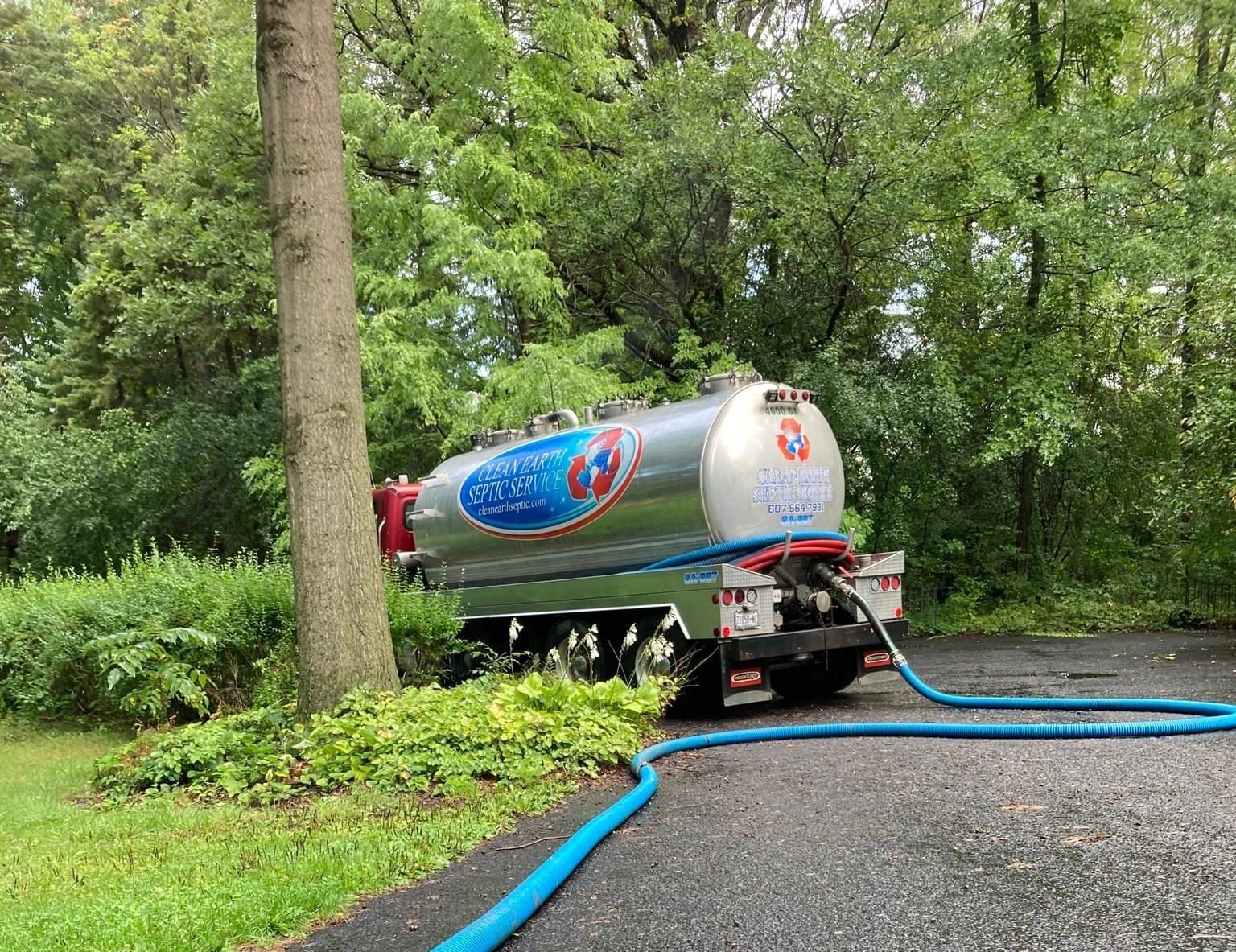
How to Clean a Septic Tank – The Complete Homeowner’s Guide for Ithaca, NY & the Finger Lakes Region
